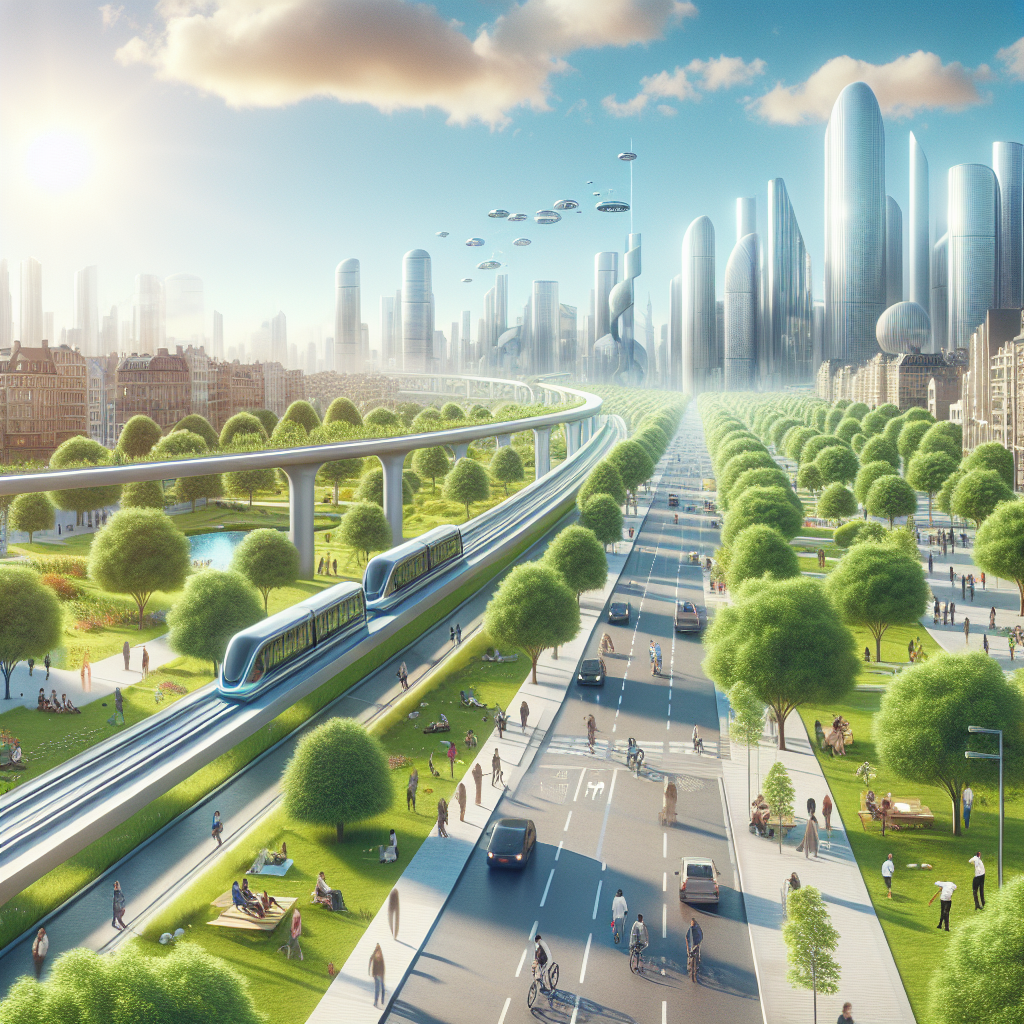Car-Free Cities: Utopian Dream or Feasible Reality?
In the face of escalating urban congestion, deteriorating air quality, and the urgent need to address climate change, the concept of car-free cities is gaining traction. This idea, once considered a utopian dream, is increasingly being seen as a feasible reality. But is a city without cars truly achievable, or is it merely a fanciful notion? This article explores the viability of car-free cities, examining their potential benefits, challenges, and the steps some cities are taking toward this radical transformation.
The Vision of Car-Free Cities
Imagine a city where the air is clean, the streets are quiet, and green spaces abound. Children play safely in public squares, and bicycles and pedestrians dominate the thoroughfares. This is the vision of a car-free city. Beyond the idyllic imagery, the concept is grounded in practical benefits: reduced greenhouse gas emissions, improved public health, and enhanced quality of life.
The Benefits of Going Car-Free
1. Environmental Impact: Cars are a major source of CO2 emissions and pollutants that contribute to climate change and air pollution. Removing them from cities would significantly reduce these harmful effects.
2. Public Health: Car-free environments encourage walking and cycling, improving cardiovascular health and reducing obesity rates. Additionally, lower vehicle emissions would lead to cleaner air, decreasing respiratory ailments.
3. Urban Space Transformation: Without the need for roads and parking spaces, vast areas would be available for parks, playgrounds, and community spaces, fostering social cohesion and biodiversity.
Challenges and Counterarguments
Despite the clear benefits, transitioning to a car-free city faces significant obstacles:
1. Economic and Cultural Dependence on Cars: Many economies and lifestyles are closely tied to vehicle ownership and use. Shifting away from this model requires substantial cultural change and economic adaptation.
2. Public Transport Infrastructure: For a car-free city to function, extensive and efficient public transport systems must be in place to accommodate all residents, which demands considerable investment and planning.
3. Accessibility and Equity Concerns: Ensuring that car-free policies do not disadvantage those with mobility issues or who live in less accessible areas is crucial to avoid exacerbating social inequalities.
Toward a Feasible Reality
Several cities around the world are making strides toward reducing car dependency:
– Copenhagen, Denmark: Renowned for its cycling culture, Copenhagen has extensive bike lanes and aims to become carbon-neutral by 2025.
– Venice, Italy: Perhaps the most famous car-free city, Venice relies on boats and walking, showcasing the viability of life without cars.
– Barcelona, Spain: The “superblock” model reclaims streets from cars for pedestrian use, significantly reducing traffic within designated blocks.
These examples demonstrate varying approaches to reducing car dominance, suggesting that while a fully car-free city may be challenging, significant reductions in car use are achievable.
Implementing the Vision
For cities aiming to reduce car dependency, several strategies are essential:
1. Enhancing Public Transportation: Developing comprehensive, reliable, and affordable public transit networks is a cornerstone of reducing car use.
2. Investing in Pedestrian and Cycling Infrastructure: Safe and convenient paths for walking and cycling encourage these more sustainable modes of transport.
3. Urban Planning and Policy: Zoning laws, urban design, and policies that promote dense, mixed-use developments can support less car-dependent lifestyles.
4. Public Engagement and Incentives: Encouraging public support through education and incentives for using alternative modes of transport is critical for a smooth transition.
FAQs
Q: Can a car-free city work in large metropolitan areas?
A: While challenging, large cities can reduce car dependency by investing in public transport and infrastructure for non-car travel. Success depends on tailored, scalable solutions and public support.
Q: How would goods and services be delivered in a car-free city?
A: Electric cargo bikes, small electric vehicles, and designated delivery times are potential solutions for maintaining goods and services in car-free zones without compromising the vision.
Q: Wouldn’t businesses suffer without customer car access?
A: Studies have shown that pedestrianized areas can boost local businesses as foot traffic increases. The key is effective planning and providing access for all citizens.
Q: What about people who need cars for mobility reasons?
A: A truly inclusive car-free city would need to ensure accessibility for everyone, including those with disabilities. This could involve exceptions for specific needs, like accessible electric vehicles.
Q: Is it possible to transition to a car-free city gradually?
A: Yes, many cities are taking incremental steps towards reducing car use, such as expanding pedestrian zones, increasing public transit options, and incentivizing electric vehicle use. A gradual transition allows for adaptation and innovation.
Conclusion
While the complete elimination of cars may not be immediately feasible for all cities, the movement towards reduced car dependency is both a necessity and an achievable goal. By learning from cities that have made significant progress, and by facing the challenges head-on with innovative solutions, the dream of clean, livable, car-free urban environments can become a reality. The journey there will require vision, commitment, and collaboration among all stakeholders, but the benefits — for our health, our planet, and our communities — make it a goal worth striving for.

